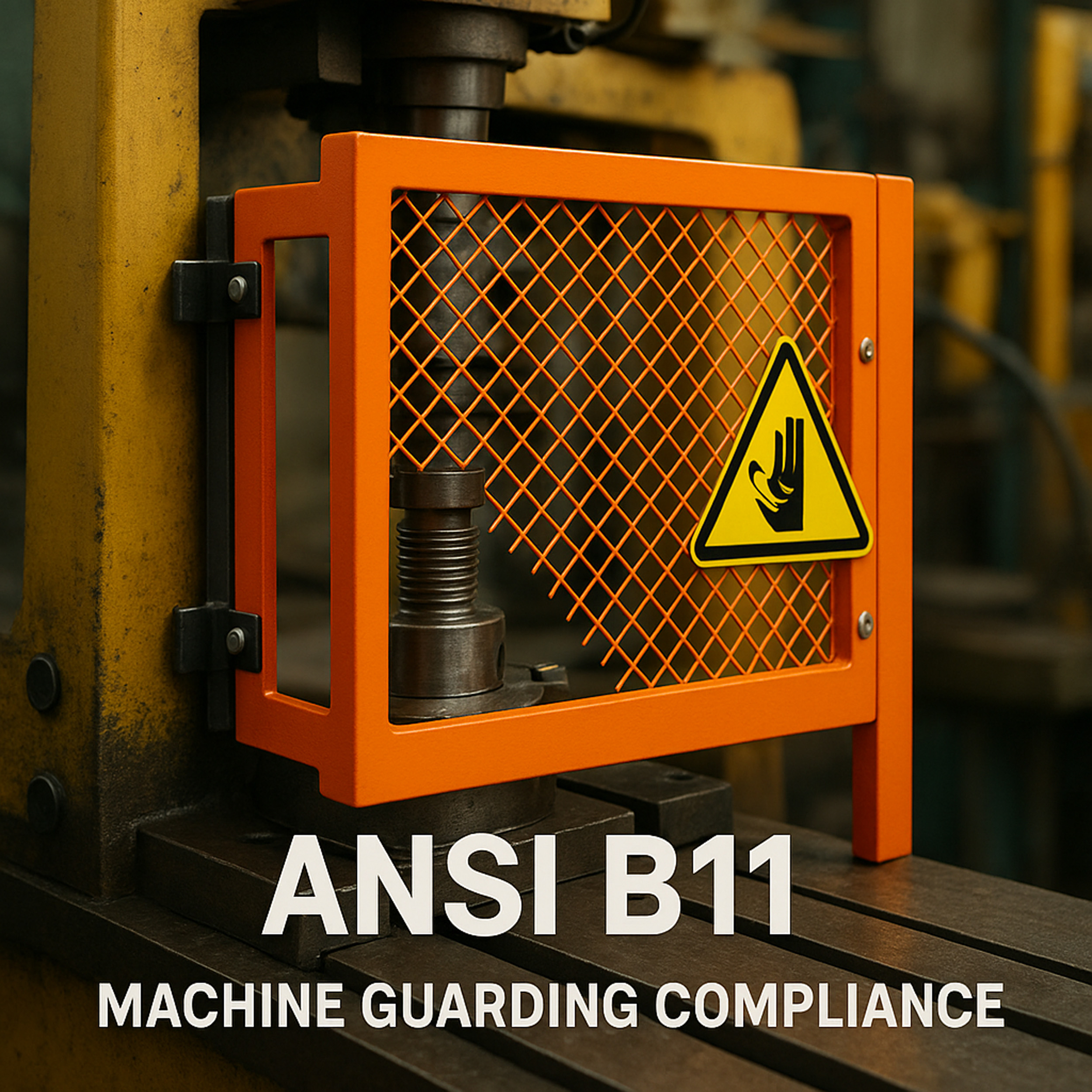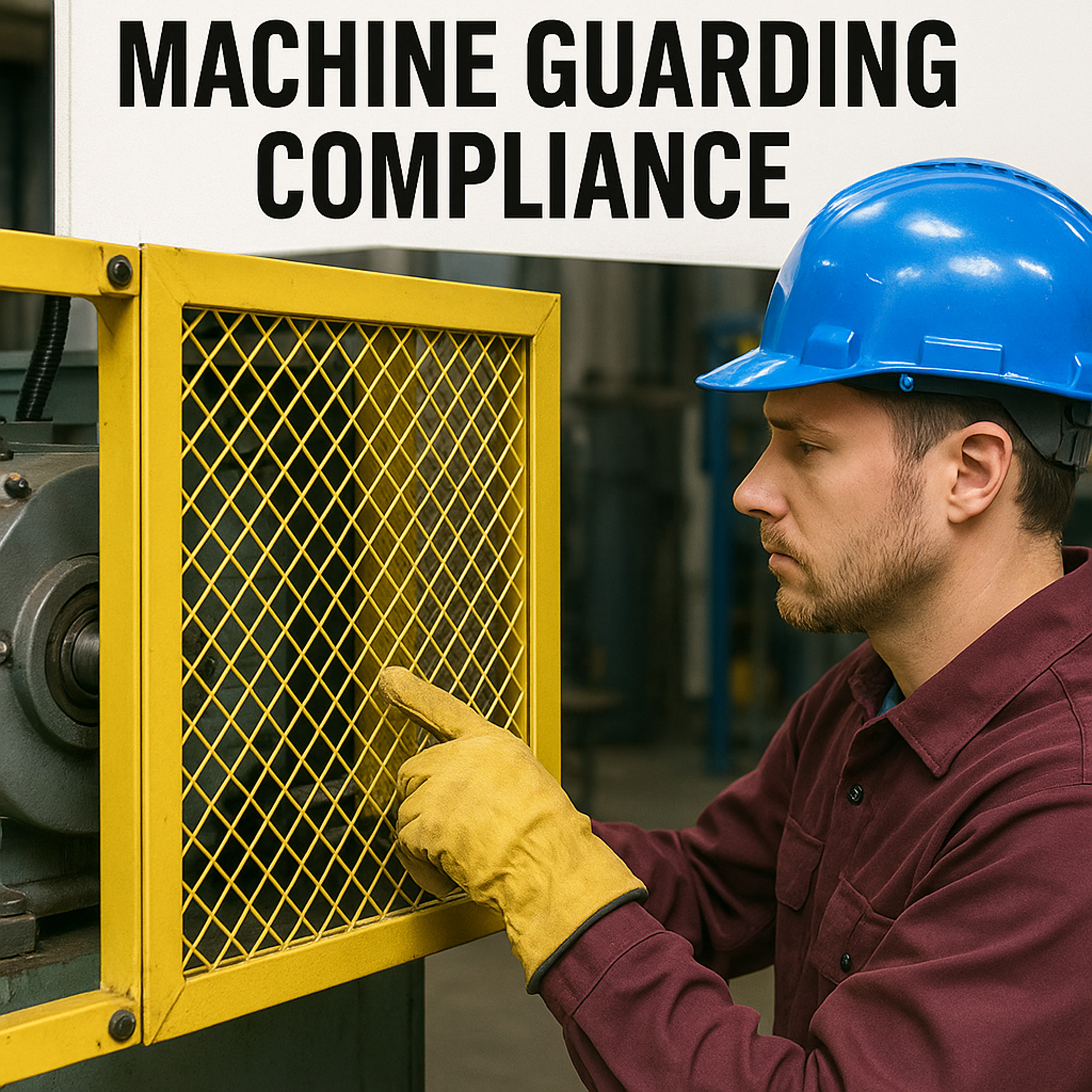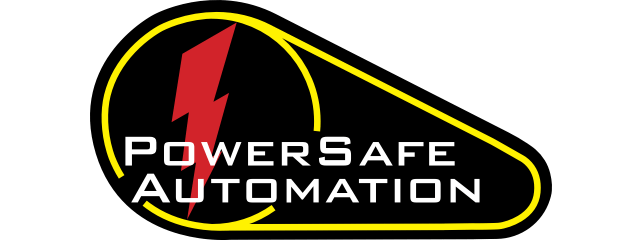Machine Guarding Compliance
Compliance Corner
From Risk to Retrofit for solving guarding challenges on legacy machines, below is a way to provide risk reduction or stay compliant through risk mitigation and protect your workers by easy-to-navigate lists of essential machine safety standards and regulations.
OSHA citations for machine guarding violations are among the most common in manufacturing. Make sure your facility is up to date with current standards, and remember, there is no grandfather clause when it comes to protecting your employees.
Schedule a meeting with a Safety Consultant
American National Standards Institute or ANSI has published a list of important machine guarding standards to help companies protect their workers and creating a overall safer workplace.
- ANSI B7.1 - Industry standard for grinding wheels
- ANSI B11.0 - General requirements and risk assessments
- ANSI B11.1 - Mechanical power presses
- ANSI B11.19 - Performance criteria for safeguarding
- ANSI B11.4-2003 - Shears (mechanical, hydraulic, pneumatic, hydro-mechanical)
- ANSI B11.6 - Manual turning machines (lathes)
- ANSI B11.8 - Manual milling, drilling, and boring machines
- ANSI B11.9 - Grinding machines
- ANSI B11.10-2003 - Metal sawing machines
- ANSI B11.12 - Roll forming and bending machines
- Review a list of additional ANSI standards at ASSP.org

Safety Support
- Guarding Assessments
- Engineered Guarding Solutions
- Manufacturing and Assembly
- Nationwide Installation
- Electrical Integration
- Preventative Maintenance Program
Occupational Safety and Health Administration or OSHA enforces mandatory regulations under 29 CFR.
- OSHA 1910.211 - Definitions
- OSHA 1910.212 - General requirements for all machines
- OSHA 1917.151 - Power transmission systems
- Check out more safety regulations on machine guarding standards at OSHA.gov

Safety Failure Issues
- Serious injuries or fatalities
- Costly OSHA violations
- Downtime in the workplace
- Decline in workplace attitudes
- Litigation and settlements
- Machine operation anxiety
Here are the top 10 most frequently cited OSHA violations for Fiscal Year 2024
- Fall Protection – General Requirements (29 CFR 1926.501)
6,307 violations
Falls remain the leading cause of fatalities in construction, making this the most cited standard for the 14th consecutive year. - Hazard Communication (29 CFR 1910.1200)
2,888 violations
This standard ensures that information about chemical hazards is communicated to workers through labels, safety data sheets, and training. - Ladders (29 CFR 1926.1053)
2,573 violations
Improper use of ladders, such as using damaged ladders or not securing them properly, leads to numerous injuries. - Respiratory Protection (29 CFR 1910.134)
2,470 violations
Violations often involve failure to establish a respiratory protection program or provide proper fit testing. - Lockout/Tagout (29 CFR 1910.147)
2,443 violations
This standard addresses the control of hazardous energy during equipment maintenance to prevent unexpected start-up. - Powered Industrial Trucks (29 CFR 1910.178)
2,248 violations
Common issues include lack of operator training and improper maintenance of forklifts and similar equipment. - Fall Protection – Training Requirements (29 CFR 1926.503)
2,050 violations
Employers must provide training for employees exposed to fall hazards, ensuring they understand how to recognize and avoid such hazards. - Scaffolding (29 CFR 1926.451)
1,873 violations
Violations often involve improper scaffold construction or lack of guardrails, leading to fall hazards. - Eye and Face Protection (29 CFR 1926.102)
1,814 violations
Employers must provide appropriate eye and face protection when workers are exposed to hazards like flying particles or chemical splashes. - Machine Guarding (29 CFR 1910.212)
1,541 violations
This standard requires that machines be equipped with guards to protect operators from moving parts.
Here is a list of 20 common machine hazards found in manufacturing facilities, relevant for safety audits, training, and machine guarding assessments:
-
Pinch Points – Areas where two parts move together and can pinch or crush body parts.
-
Crushing Hazards – From moving machine parts, rollers, or hydraulic presses.
-
Shear Points – Places where machine blades or parts move past each other.
-
Rotating Parts – Shafts, gears, pulleys, and spindles can catch clothing or fingers.
-
Entanglement Hazards – Loose clothing, jewelry, or hair can get pulled into machinery.
-
Sharp Edges – On blades, sheet metal, or worn machine parts.
-
Flying Debris or Chips – Resulting from grinding, cutting, or machining operations.
-
Burn Hazards – From contact with hot surfaces or steam lines.
-
Electrical Hazards – Exposed wiring, short circuits, or faulty controls.
-
Noise Exposure – Prolonged operation of machines causing hearing damage.
-
Vibration Hazards – Extended use of tools or machines causing hand-arm vibration syndrome (HAVS).
-
In-running Nip Points – Between rollers or belts where materials feed into a machine.
-
Unexpected Start-Up – Equipment energizing without warning due to control failures or lack of lockout/tagout.
-
Stored Energy – Pressurized systems (hydraulic, pneumatic) releasing suddenly.
-
Slips and Trips – Around machines due to spilled coolant, oil, or parts.
-
Fire Hazards – Sparks from machines igniting nearby flammable materials.
-
Cutting or Severing Hazards – Saws, blades, and high-speed tools.
-
Impact Hazards – From moving parts or ejecting components.
-
Automation Hazards – Robotic arms moving unexpectedly or operating in unsafe proximity.
-
Inadequate Guarding – Missing, bypassed, or ineffective guards exposing operators to harm.
Looking to stay compliant with turnkey guarding and protect your workers? Do you need a stop time distance evaluation? Or better yet, adopting best practices taking safety to a greater level. Understanding and implementing the right ANSI standards and OSHA compliance regulations is key to creating a safer manufacturing environment.
Learn more about machine guarding strategies and real-world applications in our Safety Solutions Blog
Still have questions? Explore our Machine Guarding FAQs for answers about OSHA, ANSI, and Best Practice in Machine Guarding.


